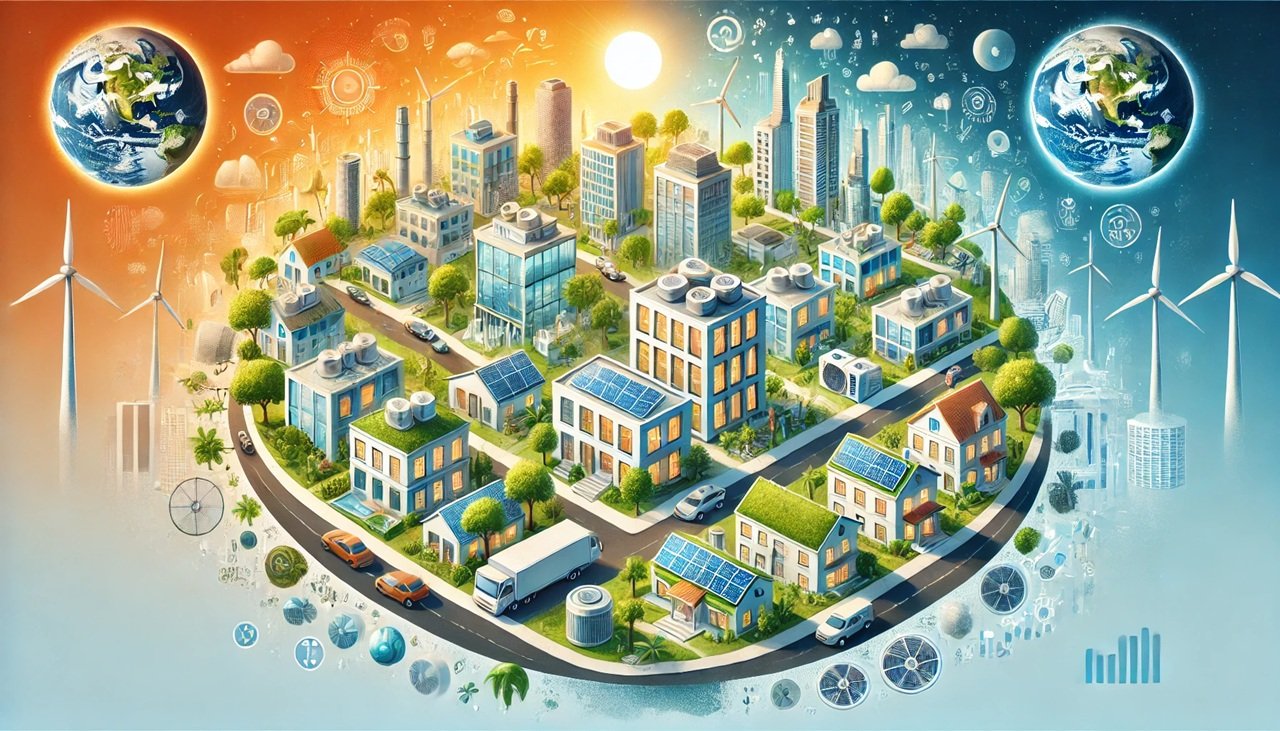On 20 March 2025, the International Finance Corporation (IFC), the United Nations Environment Programme (UNEP) Cool Coalition, and the Global Alliance for Buildings and Construction (GlobalABC) hosted the second “Cool Talks” webinar, Cooler Finance: Sustainable Space Cooling for All. The session presented findings from the joint IFC–UNEP Cool Coalition report Cooler Finance: Mobilizing Investment for the Developing World’s Sustainable Cooling Needs.
The event addressed the rising demand for space cooling driven by global temperature increases and urbanization, especially in developing countries. Participants discussed the need to scale up investment in energy-efficient, climate-friendly cooling technologies. Annual investment in the sector could reach $332 billion by 2050 - over half of the projected $600 billion annual market - making it essential to integrate both passive and active cooling solutions.
Opening the webinar, Lily Riahi, Cool Coalition Global Coordinator, described cooling as a key strategy for both climate mitigation and adaptation. “Cooler finance is a defining issue, as each year brings higher greenhouse gas emissions and more extreme heat, leaving vulnerable communities struggling to survive,” she said.
The session reinforced the goals of the Global Cooling Pledge, launched at COP28 in 2023 and supported by over 70 governments and 80 organizations. The pledge aims to reduce cooling-related emissions by more than 60% by 2050 and includes targets across efficiency, refrigerant use, equitable access, and nature-based solutions.
Jonathan Duwyn, Programme Management Officer at GlobalABC, highlighted the importance of passive cooling design and encouraged greater use of traditional building methods suited to local climates. He introduced a new fact sheet summarizing key findings from the Cooler Finance report, focused on the buildings and construction sector. “We must come back to solutions rooted in local climates - construction techniques, technologies, and design that can limit the need for mechanical cooling,” he said.
Diep Nguyen-Van Houtte, Senior Manager at IFC, stressed the role of green buildings in sustainable cooling. She presented IFC’s “five-by-five” strategy - targeting five cooling sectors via five engagement pathways - and cited the EDGE Green Building Program, which has certified over 110 million m² globally, enabling around $110 billion in green investments.
UNEP’s Gennai Kamata detailed how passive strategies such as building orientation, natural ventilation, shading, and insulation can reduce cooling demand by up to 24% by 2050. These solutions could avoid 1.3 billion tons of CO₂ emissions and save $3 trillion in equipment costs. “Passive cooling is not new - it’s cost-effective, low-tech, and already available. What’s missing is awareness and integration into design,” Kamata said.
From an industry perspective, Bolivar Monroy, Technical Director at Colombia’s ACAIRE, showcased energy-efficient HVAC systems, smart automation, low-GWP refrigerants, and hybrid cooling solutions achieving up to 65% energy savings. He cited examples from New York and Singapore where AI-driven retrofits led to significant reductions in emissions and operational costs. “The good news is that we have the technology to make this transformation possible,” Monroy stated.
The Q&A session, led by IFC’s Rusmir Musić, emphasized early-stage integration of efficiency in building design and policy support for implementation. Musić promoted tools like EDGE for evaluating lifecycle cost savings and highlighted non-fiscal measures, such as faster permitting, to support sustainable cooling.
Gennai Kamata concluded by encouraging stakeholders to join the Cool Coalition Passive Cooling Working Group. He announced upcoming Passive Cooling Guidelines ahead of COP30, which will provide policymakers with technical solutions and policy recommendations for scaling up passive cooling globally.
